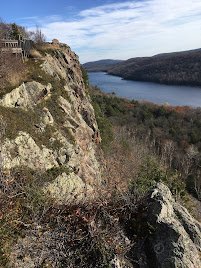On this mild, sunny morning in Littleton, I headed down to South Platte Park to check on the progress of the Front Range waterfowl migration. Though I encountered most species, the numbers remain low, especially for the end on November; no doubt, climate change is slowing (and may eventually halt) the autumn waterfowl migration.
As it turns out, the highlight of my morning was finding a marsh wren in the cattails along Eaglewatch Lake. A summer resident across the Northern U.S. and Canada, these reclusive songbirds winter in fresh and saltwater marshes across the Southern U.S., the Desert Southwest and the Pacific Coast. Here in Metro Denver, they are more common during the warmer months but some remain through the winter. Consuming a wide variety of insects, spiders and larvae, marsh wrens are known to construct multiple nests in the spring, abandoning most or using them as hideouts.
As veteran birders know, we often set out on field trips with certain expectations (e.g. observing large flocks of waterfowl). In the end, a single bird may turn out to be the highlight and, today, it was a lone marsh wren.










